Even though the Internet Movie Database isn't
a competitor for us in terms of the kind of service it provides,
the IMDB offers interesting perspectives on the use of interactivity
in a database, and ideas on how the annotation feature can
be structured.
#1 Main screen entering any specific project (film) page
- two interactive sections on the first screen are pointed
out in red - one allows users to add comments, the other allows
users to rate the film. Yellow buttons on the page, as aligned
with the second arrow below, are used throughout the site
to indicate points where the user can add or edit information.
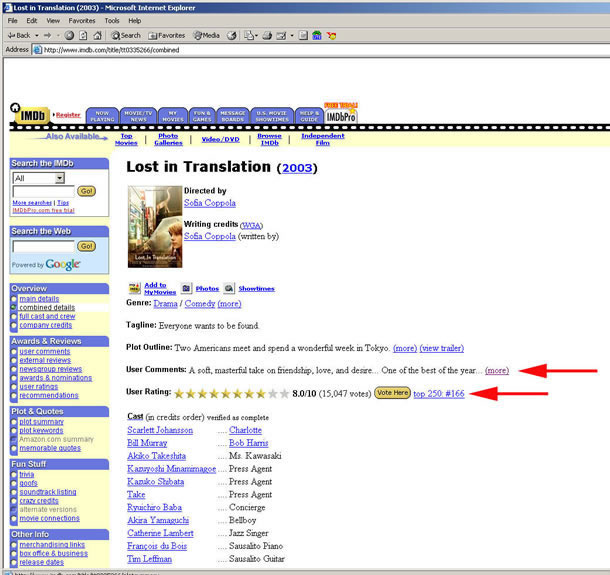
#2 Users can also click on indivdual items within the
page, each of which link interactively to other information
on those terms within the database - for instance, if the
user clicks on "Bill Murray", the database entries on that
term appear, along with items in that entry that can be edited
by the user. In this case, the user can edit the biography
(after clicking into it), add (but not delete) images, and
edit the filmography. Each of these require the user to be
a registered user of IMDB, and all input is filtered.
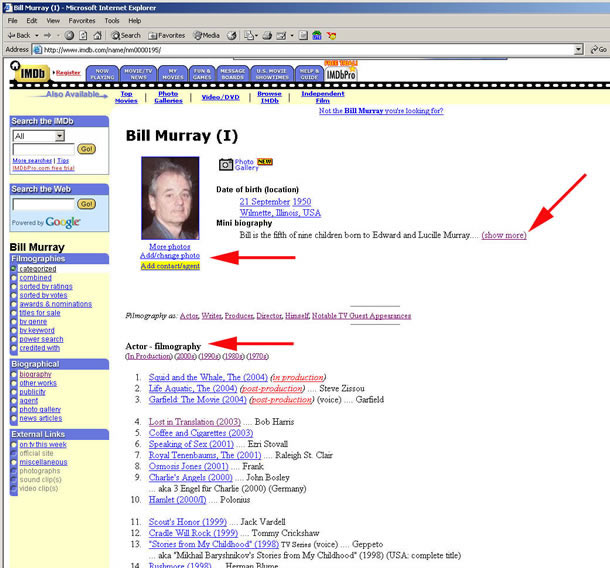
#3 All the subsections are made up of information sumitted
and monitored by users. In the case below, there is a separate
section called 'trivia' which consists of trivia about a specific
entry submitted by users. In the case of more popular entries,
like the one below, pages get eyeballed several hundred times
daily, and so the monitoring for errors is done in a fairly
horizontal manner without any top-down editing required.

#4 Adding, but not removing, comments (as opposed to 'reviews')
to the site are fairly easy, and users who do not register
are also allowed to put there comments in. Users are however
encouraged to register, add personal information to link them
to their comments, thus, it is possible to trace the history
of an individual's comments. In addition, the arrows below
point out that most of the information is required to be inputted
in specific formats.
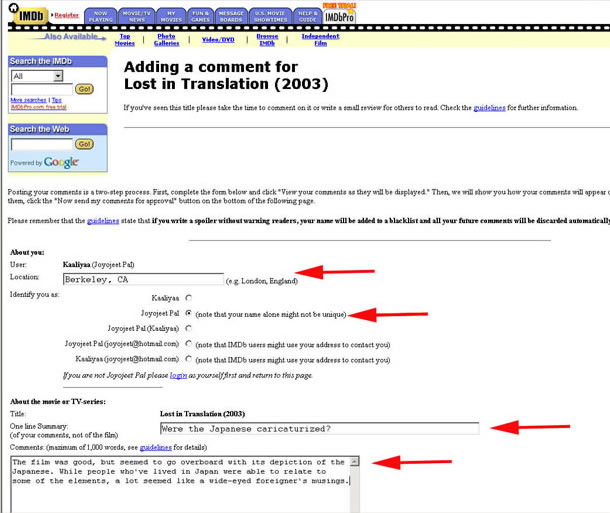
#5 Users can interactively post messages message boards
relating to any specific entry. This is a related resource
to the annotation system we have in mind. Users have the option
of following or ignoring certain threads of messages as they
wish, and of reporting other users who misuse the message
boards. As seen below, the moderators for the site have deleted
a posting judged inappropriate.
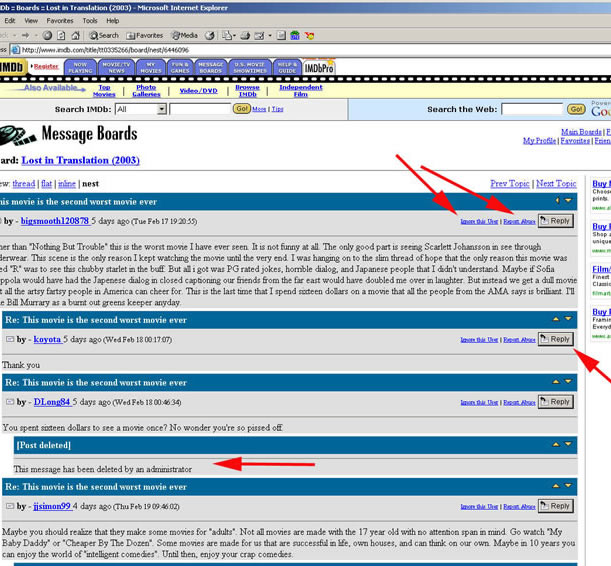
#6 For entering information to the site, users need
to use a variety of interfaces, depending on the kind of task.
Here is an example of the interface to update one's profile.
Notice that the user's past history, such as threads ignored,
show up in the profile.
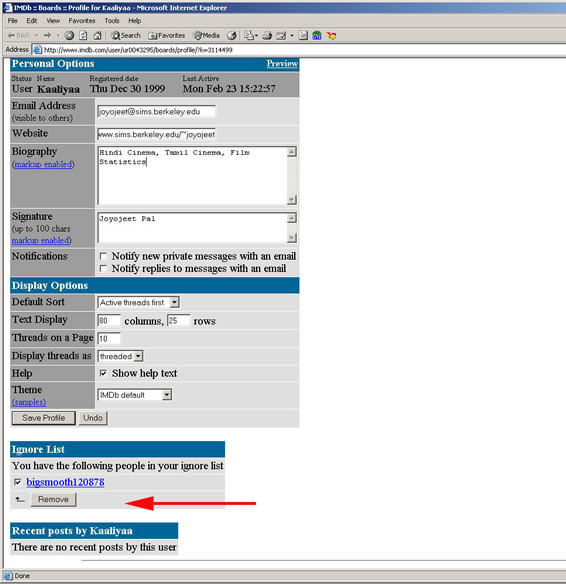
#7 Here is an example of a page that is dynamically
generated, and in which the user has no interactive features.
In this case, the database was asked to combine two data elements
"Bill Murray" and "Dan Aykroyd" and exhibit the results. In
such cases, the results change only if users change information
in either of the primary data elements "Bill Murray" or "Dan
Aykroyd"
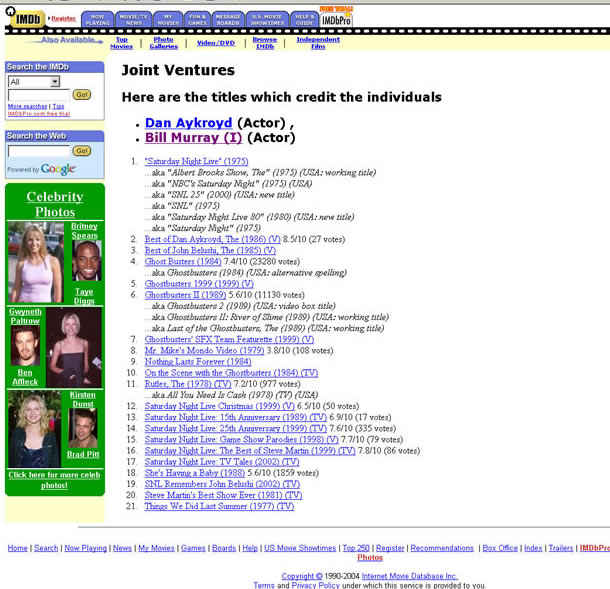
#8 Certain items in the database have more layers of
authorization for altering existing information. These are
elements such as the main details, reviews, and business information
relating to films. To add or delete from these, users must
be registered and follow a certain protocol. In the case below,
the user has tried to alter the entries under some of these
protected elements, as shown by the arrows. As seen in the
two steps below, this form is evidently more restrictive than
the earlier format that allowed users to add message board
entries.
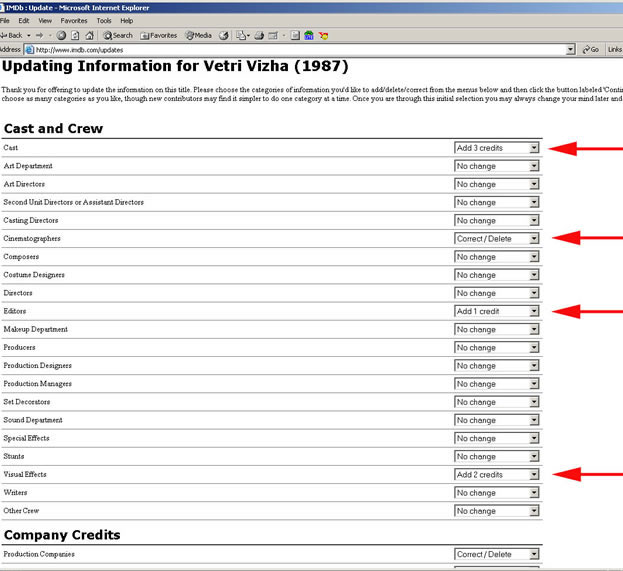
#9 Here is a second step, in which the user is asked
to enter the name of the actor and character they played -
this format is standard through the entire system.
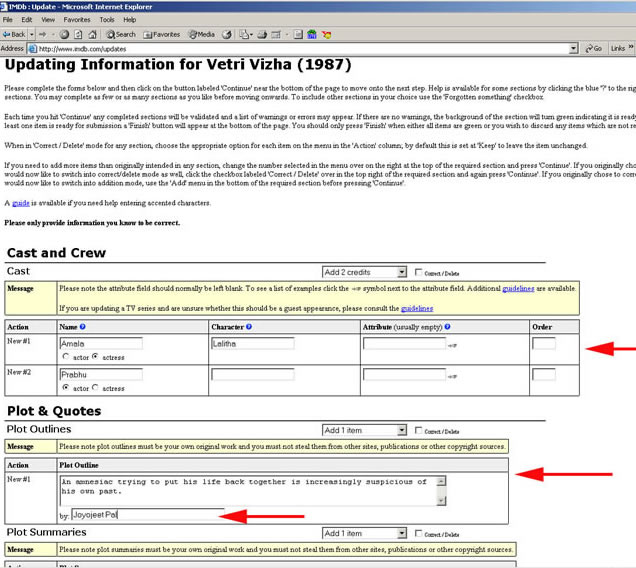
#10 Finally the system verifies existing matches to
any information entered by the user. Any new information added
by the user gets indexed in the same fashion. Notice below,
the user has just added "Prabhu" as the name of an actor,
the database asks the user to verify which of the following
individuals is being referred to, and a reference to the individual's
other entries is added. In this case, the user is asked if
'Prabhu' who is also listed under the entry "Agni Nachatram"
is the person being referred to. If unsure, the user may click
on the entry to check.
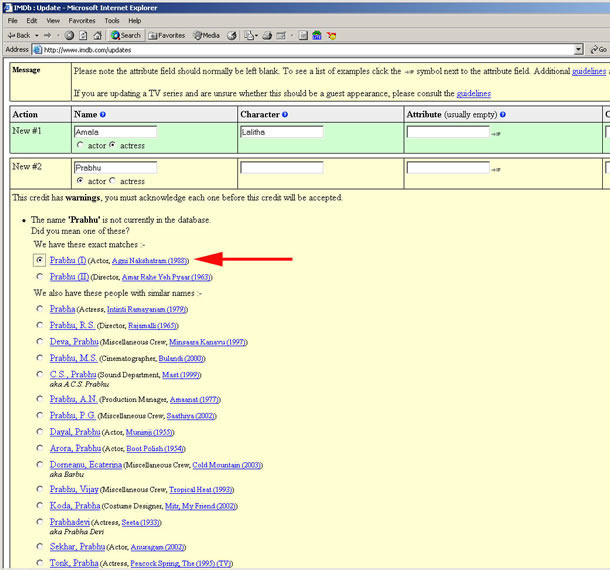
#11 One existing annotation system is Microsoft Word's
footnotes. Some key differences exist between this and a web
implementation of annotation - in the case of Word documents,
the annotation does not need to be interactively linked to
other existing information on the document, whereas a web
implementation may need documents to not only cross link within
themselves, but also to other documents within the database.
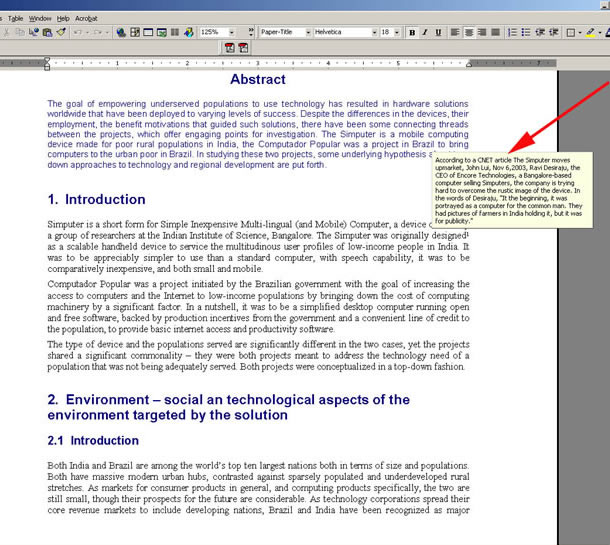
Strengths:
- Very active critical mass of users, interactive areas
are eyeballed very often
- Currently largest database of its kind on the Internet
- Very simple web interface, unchanged for several years,
with almost no graphics
- Links are very easy to find, and highly intuitive
- Very high interlinking within the site
- Vast collection of keywords covering most genres of cinema
- listing under keywords has also been done very effectively,
at least for the 'more visited' films
- Excellent search facilities
- Does a good job of creating a 'community' of users, thus
regular users contribute often to the site
- A lot of work put into the creation of categories - almost
any perceivable information on films is listed under individual
entries.
Weaknesses:
- The facilites to update information are not intuitively
available to users, difficult for first-time users to add
comments
- Significant scrolling often needed to get to points where
the real interactive information lies
- Descriptive information and instructions are too detailed
and take up large portions of the screen - the fonts used
are large, making this a bigger problem in the case of long
entries
Competitive Analysis Summary
Good Features:
- Excellent and highly reliable information on projects
- Good database structure for long-term expansion
- Open structure allowed it to find acceptance among online
users and film buffs, who now form the critical mass of
contributors who power the database (even though imdb.com
was later bought over by Amazon, they carried over their
initial body of contributors)
- Very convenient (although unattractive) design for browsing
Mistakes to Avoid:
- Keep less need for moderation - imdb.com has a very large
amount of data coming in daily, which must require a lot
of moderation.
- Make a more attractive design
|